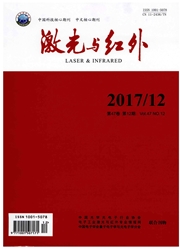

 中文摘要:
中文摘要:
利用近红外透反射光谱技术,研究短波近红外光谱(780~1100nm)无损检测蔗糖溶液的可行性,并通过主成分回归(PCR)和偏最小二乘(PLS )方法建立了蔗糖溶液的近红外定量分析模型。采用Savitzky-Golay卷积平滑(5点)和多元散射校正(MSC)进行预处理,并且对预处理后的数据进行建模分析。PCR定量分析的结果:主成分数 PC =7,交互验证相关系数RCV =0.957335,交互验证的校正标准偏差RMSECV=0.015859;PLS定量分析结果:主成分数PC=4,交互验证相关系数RCV =0.975789,交互验证的校正标准偏差RMSECV=0.012251。分别用PCR和PLS的校正模型对预测集样本进行预测,两种模型的预测标准偏差RMSEP分别为0.0127,0.0118。二者均对高浓度蔗糖溶液的预测结果比较理想,而且在PLS模型下,77%以上的样本相对误差在10%以下,较PCR模型的高。综合结果,PLS所建立的模型简单,而且精度很高,所以,基于短波近红外光谱的蔗糖浓度的快速无损检测是可行的。
 英文摘要:
英文摘要:
Near-infrared spectra of trans-reflective is applied to determine the feasibility of nondestructive testing of the sucrose solution in the near-infrared wavelength range of 780~1 1 00nm,and principal component regression (PCR) and partial least squares(PLS)are used to establish the near-infrared quantitative analysis model of sucrose solu-tion.After the pretreatment of (Savitzky-Golay)5 points smoothing and multiplicative scatter correction (MSC),the (PCR and PLS)calibration model is made.The results of quantitative analysis of PCR are the number of principal component PC=7,the correlation coefficient RCV =0.957335,root mean square error of cross validation RMSECV=0.01 5859;The results of quantitative analysis of PLS are the number of principal component PC=4,the correlation coefficient RCV =0.975789,root mean square error of cross-validation RMSECV=0.01 2251.The prediction samples are predicted respectively by the calibration model of PCR and PLS.Root mean square errors of prediction are 0.01 27,0.01 1 8 respectively.Both of the methods are satisfactory for the predicted results of high concentration sam-ples.The relative errors of more than 77% of validation samples are below 1 0% using PLS.All of results show that PLS model is simpler and its prediction accuracy is higher,and short-wave near-infrared spectrometry is a valuable, rapid and nondestructive tool for the quantitative analysis of sucrose solution.
 同期刊论文项目
同期刊论文项目
 同项目期刊论文
同项目期刊论文
 Analyzing Strawberry Spoilage via its Volatile Compounds Using Longpath Fourier Transform Infrared S
Analyzing Strawberry Spoilage via its Volatile Compounds Using Longpath Fourier Transform Infrared S Research on measurement method of Sucrose Concentration by Short-wave Near-infrared trans-reflective
Research on measurement method of Sucrose Concentration by Short-wave Near-infrared trans-reflective 期刊信息
期刊信息
